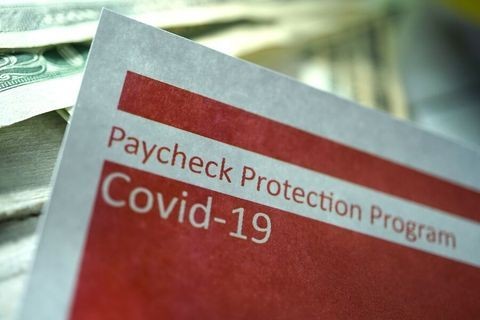Antitrust – The Return of "Trial By Formula"?
Publication | 01.18.17
Key Points
- Easier to certify: The Supreme Court has lowered the bar for class certification.
- A silver lining for defendants: The ruling opens the door to questioning class sampling methods to prevent certification.
- Acting early on: Consider the use of discovery and Daubert motions before actual trial proceedings begin.
[ARTICLE PDF]

A recent Supreme Court case creates new opportunities for dealing with class certification issues that often are critical to antitrust cases. In March 2016, the U.S. Supreme Court ruled in Tyson Foods, Inc. v. Bouaphakeo, upholding the lower court’s certification of a class suing Tyson. Although the case involved a violation of the Fair Labor Standards Act, it will have repercussions for antitrust litigation strategies, as well.
In Tyson, the plaintiffs relied on expert-witness evaluations that were used to calculate the average time for the conduct at issue. The Court said that this use of sampling and “representative evidence” — as opposed to evidence specific to individuals — was appropriate when certifying a class.
Many observers noted that this ruling lowered the bar for class certification, reversing a several-year trend in which the Supreme Court had generally been making certification more difficult. That trend had its roots in Wal-Mart Stores, Inc. v. Dukes, which criticized the use of statistical analyses in class certification as “trial by formula.” With Tyson, however, that approach is back in play.
“As a result, antitrust defendants can now expect to see the increased use of sampling in class action suits,” says Chahira Solh, a partner in Crowell & Moring’s Antitrust Group.

DEFENDANTS: SOME GOOD NEWS
Certainly, that’s good news for plaintiffs. However, the Tyson case has a silver lining for antitrust defendants, as well. As Solh explains, the increased use of such sampling may provide another opening for those seeking to prevent certification of a class. “There are opportunities for defendants to really attack those calculations and make sure that a class is not certified," says Solh. She says that defendants should focus on examining the sampling methods and underlying data being used in order to develop a deep understanding of plaintiffs’ models — and then look for holes in their methods. “This is something that antitrust defendants had not focused on as much,” she says. “But following the Tyson ruling, this is a strategy they should consider.”
For example, defendants could make greater proactive use of discovery to find out which class members are going to be in the sample set, and whether the sample really demonstrates the viability of the plaintiff’s claim. Defendants might find that there are problems with the way sample members are selected, or uncover administrative questions that might come up later in terms of the distribution of an award. “Serving discovery focused on the plaintiff’s sampling and calculations allows a defendant to delve a little more deeply to determine if there are going to be issues that it can point to,” Solh says.
LINES OF ATTACK
With that in mind, defendants should hone their team’s ability to target discovery on the most important aspects of sampling. “Instead of going through a full analysis, they may be able to focus in on key points that quickly establish that the sample is not representative of the class,” Solh explains. “They may be able to realize some efficiencies and actually decrease discovery costs, which helps reduce the pressure to settle just to keep costs down.”
The time frames typically associated with antitrust cases can play into these strategies. Often, the activities alleged in cartel and conspiracy cases go on for years before a lawsuit is filed. That means the information needed for the statistical analysis may well be out of date or difficult to find — which opens the door to challenges.
The heightened focus on sampling also means that defendants may want to consider the use of Daubert motions early on — in this case, challenging the expert witness-based representative-sampling evidence. Daubert motions have traditionally been brought after certification and during the actual trial proceedings. But now, says Solh, “defendants should think about bringing these motions in the early stages to try to stop the class from being certified."
Finally, notes Solh, there is still some uncertainty about the Court’s view of representative evidence that won’t be settled until a new justice is named. The split Court has already prompted changes in some defendants’ strategies. For example, after appealing its price-fixing case to the Supreme Court, a major corporation decided to settle the case for hundreds of millions of dollars following the death of Justice Antonin Scalia, rather than take its chances with a 4-4 Court. When a ninth member is named to the Court, companies may want to re-examine their antitrust litigation strategies.
MORE FOCUS ON PRODUCT HOPPINGWith the Federal Trade Commission having clamped down on reverse payments and pay-for-delay tactics, some pharmaceutical companies have been turning to “product hopping” as an alternative — and that is likely to be a source of more litigation. With product hopping, a drug maker takes an older drug off the market before its patent protection runs out, replacing it with a new, slightly different formulation. This allows the company to continue having patent exclusivity. “However, the FTC and some private plaintiffs have started to say that this practice is stifling competition,” says Crowell & Moring’s Chahira Solh. That view, she says, sees product hopping as a way to force physicians and patients to use higher-priced drugs. The practice, some say, may also close the door on competitors that want to bring generic versions of the older drug to market. One high-profile product-hopping case involving drug maker Actavis (now known as Allergan) and its Namenda drug has been working its way through the courts for years. In September 2016, the Southern District of New York denied a motion to dismiss the product-hopping claim against the company. “There’s not a lot of case law on product hopping yet, but it appears that it’s a question that is going to be litigated more and more,” says Solh. She adds that product hopping may still be a viable approach for pharmaceutical companies, “but you will have to make sure that you are doing it in the right way so that you clearly aren’t pressuring or coercing doctors or patients into using your drug.” |
PDF Download
Web Flip Book
Click to access the flipbook.
Index: Litigation Forecast 2017
- "Investigations – Under Pressure and Out of Time." — Kelly Curie, Kent Gardiner, Philip Inglima, Gail Zirkelbach, Angela Styles, Trina Fairley Barlow, Cari Stinebower, and Stephen Byers.
- "Jurisdictional Analysis – Time to Trial, Favorable Courts & Other Litigation Trends." — Keith Harrison.
- "Antitrust – The Return of 'Trial by Formula'?" — Chahira Solh.
- "Environment – Climate Change: Evolving Strategies and Regulatory Upheaval." — Tom Lorenzen.
- "Government Contracts – FCA Implied Certification and Materiality: Bad News, Good News." — Tully McLaughlin.
- "Intellectual Property – The Defend Trade Secrets Act: What's the Big Deal?" — Michael Songer.
- "Class Actions – Life After Class Certification." — Michelle Gillette.
- "Labor and Employment – The Spotlight Shines on Pay Equity." — Kris Meade.
- "Product Liability – Up Next: The Personal Care and Cosmetics Industry." — April Ross.
- "White Collar – The Yates Memo: Presumption of Guilt?" — Thomas Hanusik.
- "Recovery – Learning from Experience." — Deborah Arbabi.
Contacts
Insights
Publication | 03.31.25
Health System Settles FCA Case Over PPP Loan 03.31.25 Report on Medicare Compliance
Publication | 03.24.25



